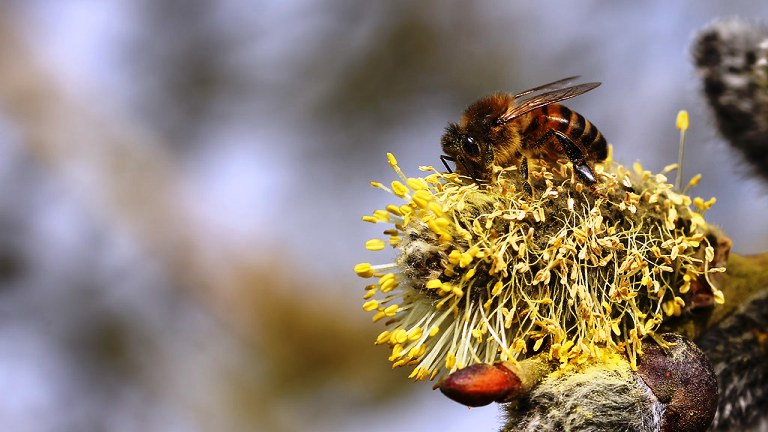Different Bee Groups
More than a hundred million years ago, there was an abundance of flowering plants throughout the world, giving vegetarian wasps called bees a wealth of resources. There was adaptive radiation across the globe, resulting in different types of bees that adapted to the varied environments, habitats, and flowers around the world.
In total, the world’s bee population exceeds 20,000 species, which are classified into nine families. Hence, the three broad groups of bees can be classified according to their tongues, or proboscis, which average approximately three millimeters in length.
Bees with long tongues drink nectar deep inside floral chambers. It is believed that shorter-tongued bees are more ancient, remembering their ancestors who were carnivorous wasps.

Short-Tongued Bees
1. Andrenidae
Warm, arid, temperate climates are ideal for mining bees. Currently absent from Australia. Andrenidae have more advanced eyes, which might be used for recognizing their predators, but are hairy, and their wasp heritage is evident in their facial structure (brown patterns like eyebrows, males with facial hair). For complex architecture, they nest in hives using multimodal communication or simple soil burrows.
2. ColletidaeIn
In South America and Europe, some species of plasterer bees, masked bees, yellow-faced bees, or polyester bees are found, but most are found in Australia and South America. The two-part tongue is used to create remarkable nest burrow linings with smooth polyester secretions.
The majority of bees carry pollen outside their bodies rather than swallowing and regurgitating it. On the other hand, other Colletidae carry pollen on the hairs of their legs. The ocelli (simple eyeballs) of these animals can be large, which allows them to see in dim light.
3. Stenotritidae
There are only a few bee species in Australia that belong to this family. Therefore, they are similar to Colletidae, but have only one mouthpart instead of Colletidae’s distinctive two. Their burrows are large and fuzzy, and they nest in them.
Medium-Tongued Bees
4.5.6 Dasyponaidae, Meganomiidae and Melittidae
The Dasyponaidae, Meganomiidae, and Melittidae Primitive families are the least changed among all bees since they separated from wasps. The majority of these bees are found in Africa. Some of the food sources are picky, sometimes avoiding pollen in favor of flower oils. Meganomiidae and Dasypodaidae have often been considered subfamilies of Melittidae.
7. Halictidae
There are many species of these bees around the world, but they are often attracted to sweat. These bees are small and can be colorful, as well as stingers. The nest is located underground in the ground or sand. Halictids are highly social bees, some of which are kleptoparasitic, while others live solitary lives. For studying social evolution, their range of social systems makes them an intriguing group to study.







